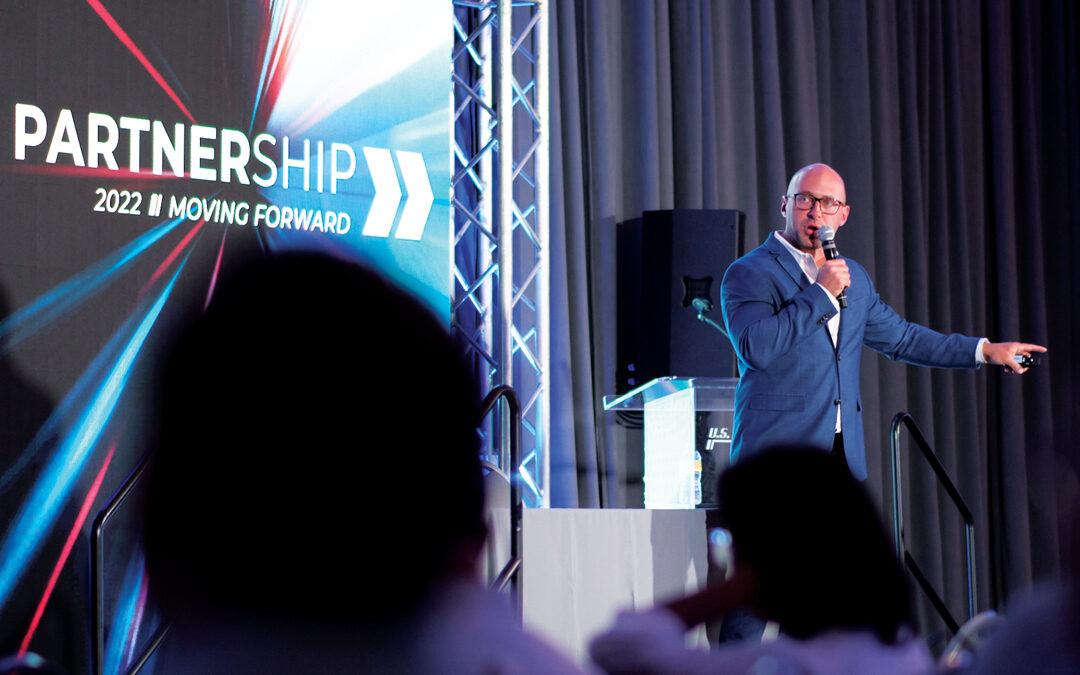From mixed reality to the metaverse, a futurist predicts the ways tech trends will impact transportation and logistics.
What’s happening: Technology disruption combined with mainstream focus on the critical role of the nation’s supply chain have created a moment for the transportation industry.
Why it matters: For businesses that adopt these trends, tech has nearly limitless potential for product and workforce development as well as process improvement.
The bottom line: Hear more from futurist Jared Weiner in this video.
Technology has unleashed cascading, rapid change across nearly every industry, but one thing has remained the same: goods still have to get where they’re going, and about 72% of U.S. freight moves by truck.
“We’re in a world that people still need to be able to get physical goods from A to B, and that’s not going anywhere,” said Jared Weiner, executive vice president and chief strategy officer for the Future Hunters. “The disruption in the space combined with the spotlight that’s been put on shipping and logistics make for an exciting future for the industry.”
Weiner spoke recently at PartnerShip, the premier U.S. Xpress partner summit and showcase for some of our top industry experts. Topics ranged from autonomous trucking and economic trends to the firsthand views of drivers on the front lines.
In his remarks, Weiner explored the ways logistics and transportation have become top priorities and mainstream topics over the last few years as the pandemic and related economic impacts upended business as usual.
“I’m excited about the future of transportation and logistics simply because of the fact that we have been talking for years about prioritizing that function with every business that we work with, certainly anyone in an industrial space or a consumer products space,” Weiner said. “Now I’m excited because supply chain has come front-and-center, and you’re going to see thousands of businesses out there innovating around it, understanding that it’s fundamental.”
But while moving goods remains essential, technology has transformed what’s possible in training and planning for hauling loads of every sort. Mixed reality — which is a combination of virtual and augmented reality — has immense potential to create greater speed and safety in training and planning, Weiner said.
“These technologies create a low- to no-risk environment to do things like prototyping products, to train people for jobs that might have safety risks involved,” Weiner said. “We can actually put people in different environments virtually where they can experience things they might face in the real world with no risk really involved, which helps us train people, and we can gamify that so not only can we onboard them that way, but we can retrain them for skills that they may need in a few years’ time.”
The metaverse — technology that simulates the real world — has been in development for decades, but is moving into the mainstream, opening up opportunities to advance businesses that incorporate those practices.
“We can take really complex things happening in a business environment, either on a factory floor, or in the supply chain in shipping, and we can actually virtually simulate them,” Weiner said. “We can learn from things, we can predict where there might be bottlenecks or mistakes or problems, and we can adapt in real time using all of that data.”
All of these trends point to a future where there is endless potential for moving goods better.
“The opportunities become effectively limitless when using virtual reality and augmented reality technology for our workforce,” Weiner said.
Hear more from Jared Weiner in this video, or learn more about his company, the Future Hunters.


